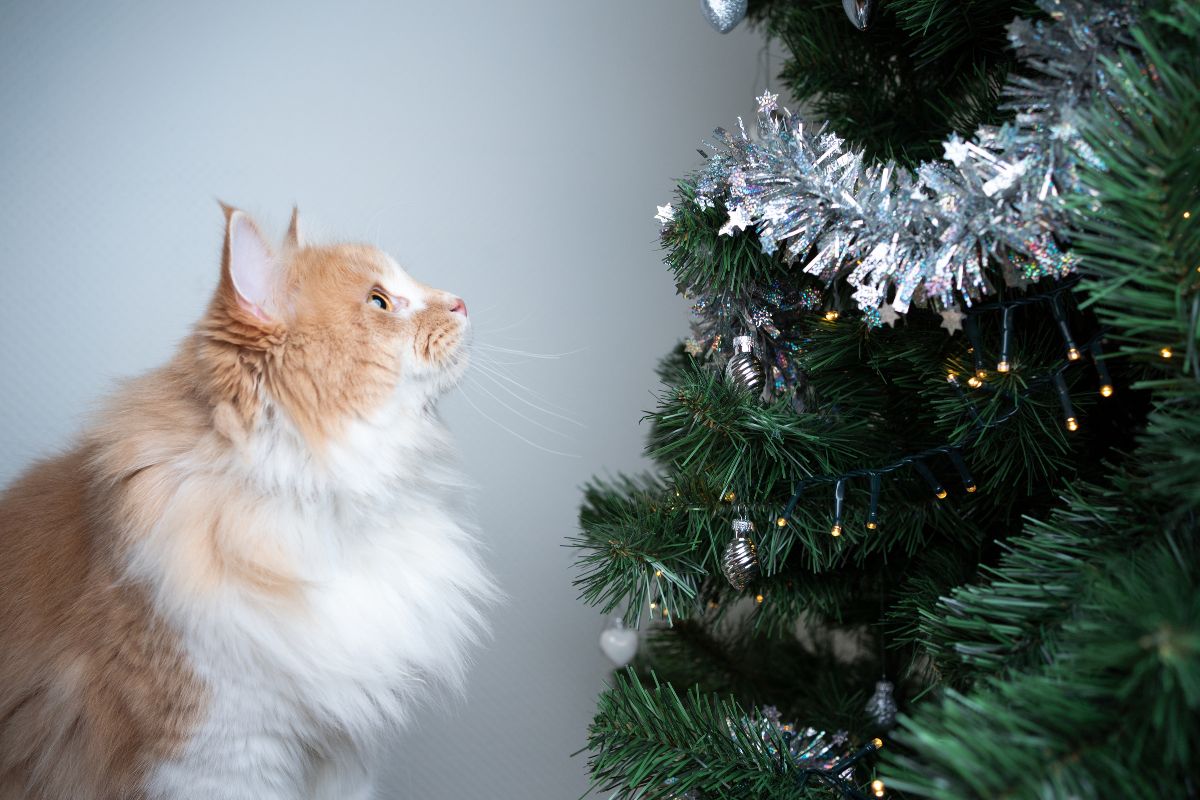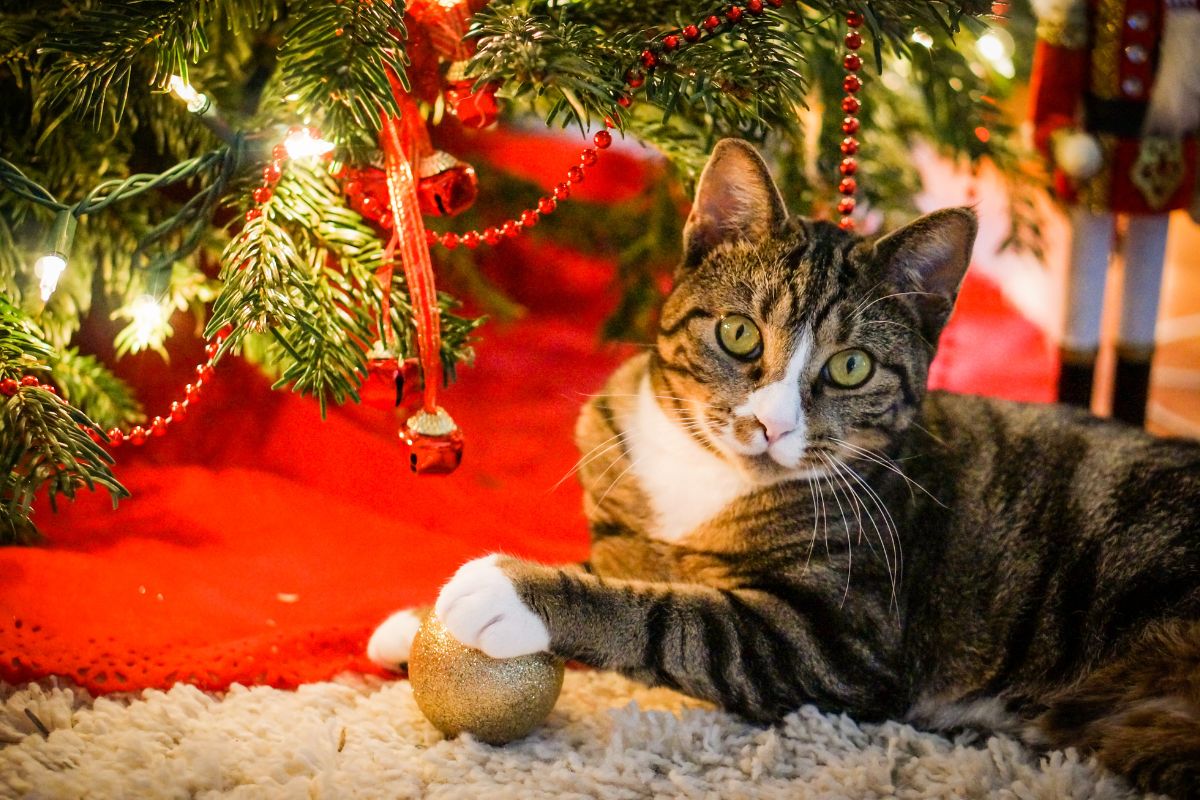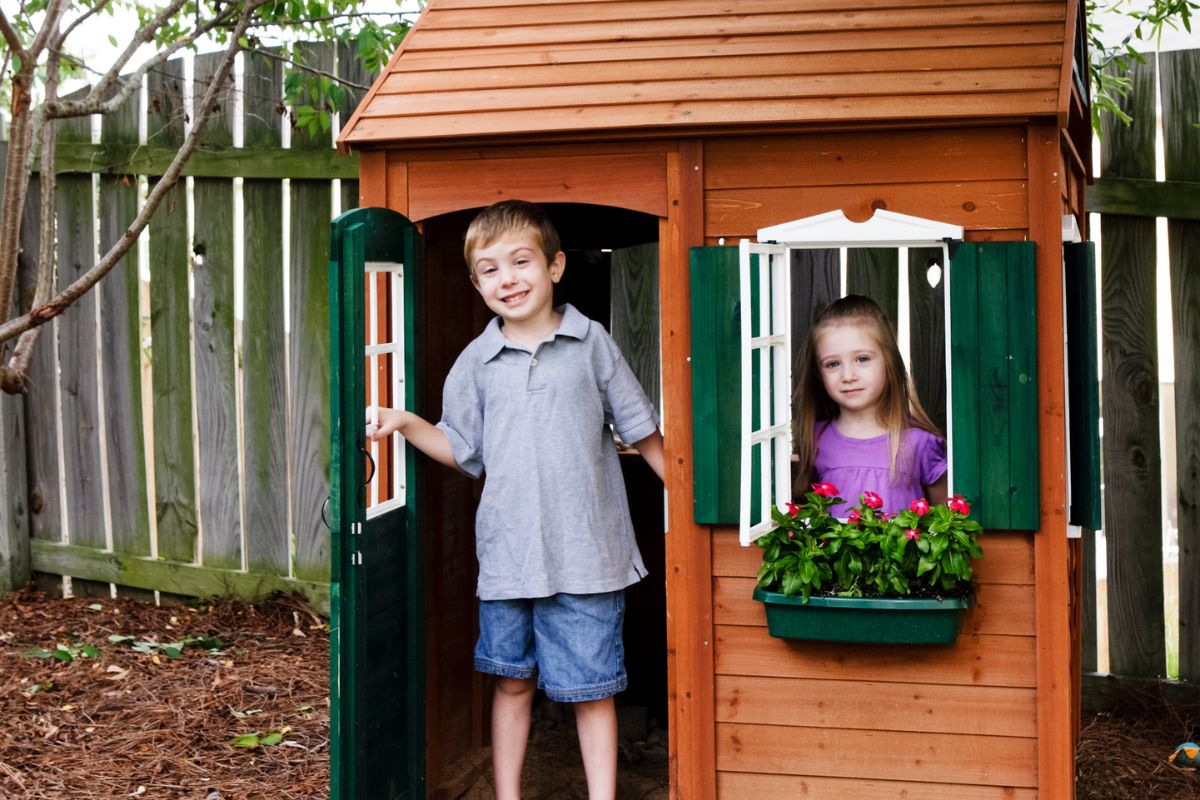Christmas is the best time to decorate your house, but when you’ve got a cat, it’s not always an easy task.

Cats are notoriously curious animals, and they are known for becoming very playful with or sitting on new objects that smell and look different to them.
As many cat owners know, your cat would rather sit on a newspaper than their actual cat bed.
Not only do you want to keep your Christmas tree and decorations intact, but you also want to make sure your cat stays safe over the holiday season.
The last thing you want is for your sweet kitty to get an injury during this time – especially given the extortionate vet prices.
So, here is our guide on how to cat-proof your Christmas tree and decorations this holiday!
Keep The Tree Elevated
Not every cat is inclined to see a tree and immediately climb it, but for those with an insatiable desire for causing chaos, they are likely to scale the Christmas tree within mere minutes.
This can lead to the decorations and pine needles falling all over the place, your cat getting stuck, or the tree itself falling over and causing damage to your cat and home.
So, the best thing you can do to prevent your cat from climbing the Christmas tree is to keep the tree elevated.
If the lowest branches of the tree are above their head height, your cat is far less likely to be interested in playing with it, climbing it, or even peeing on it.
Again, cats are known to urinate on new objects to mark their territory, and we all know how notoriously difficult it is to get the smell of cat pee out of your floor or carpet.
So, if they can’t reach the tree to pee on it, then they shouldn’t pee at all.
A good way to elevate the tree is to keep it on a small table or box, or on top of anything that will keep the bottom branches away from your kitty’s curious nose and paws.
Of course, this won’t stop the most curious of cats, but it’s a good way to prevent them from the option of climbing the tree.
Also, elevating the tree on a small table provides more space underneath the tree for presents, which is always a good thing!
Choose The Right Tree
Speaking of Christmas trees, the type of tree you buy might determine how your cat reacts to it.
While real pine trees are beautiful and make the house smell like a forest, the pine needles are actually quite dangerous for your cat to ingest thanks to the spiky nature of the needles.
Not only this, but if your curious cat likes to play with the lower branches of the real tree, you’re going to have to deal with constantly vacuuming the needles.
The bottom branches might be left completely bare of needles, too.
So, if you have a cat, it’s recommended that you buy a fake tree that looks realistic. Plus, the biggest benefit of this is that you can reuse the tree over and over again each year!
When you’re picking your tree, make sure that it comes with a sturdy base. A lot of cats like to pounce on trees and climb them, which can lead to the tree toppling over and causing an injury.
So, a sturdy and solid base should help to keep the tree in place even if your cat decides to climb it.
Also, try to opt for a smaller tree if possible. Cats might have nine lives, but you don’t want to risk them falling off a tall Christmas tree and potentially breaking a limb.
Plus, if you buy a smaller tree, you can easily make it look taller by elevating it on a small table, which also works to prevent the cat from climbing it in the first place.
Find The Right Place For The Tree
The placement of the tree will also play a huge role in how your cat treats it.
If the tree is located near a launching object, such as a table or couch, this is the perfect opportunity for your cat to jump off the furniture onto the tree.
While this might look funny at first, this destructive behavior is hard to stop.
Of course, we appreciate that some homes can only keep a Christmas tree in one place if the house is small.
Just be aware that cats will find a way to climb an object like a Christmas tree, and they will use objects to launch themselves onto it.

Don’t Decorate The Bottom Branches
While it might look cute to see a cat rolling around on their backs playing with the lowest hanging ornaments on a Christmas tree, this is actually encouraging them to be destructive.
It could end with the ornaments getting scratched, or worse, the tree toppling over if your cat gets too playful.
A good way to prevent your cat from playing with Christmas tree decorations is to keep the bottom branches free from ornaments.
This also means you won’t have to constantly pick up and replace ornaments that have been flung off the tree from your curious cat.
The same also applies to tinsel. While tinsel is a great way to brighten up your tree with various colors, this can be a choking hazard for cats that try to eat it.
Cats will typically try to consume and play with tinsel due to its shiny appearance, so it’s best to opt for natural decorations made of wood or paper.
Not only are these materials harder to ingest and choke on, but they’re also safe for consumption if your cat does manage to tear it apart.
Don’t Immediately Decorate The Tree
While we understand the excitement of putting up a Christmas tree and immediately decorating it, we recommend avoiding this for a couple of days.
Cats can be curious, destructive, and timid around new objects in a home, especially with something as large as a Christmas tree.
If you give them time to familiarize themselves with the new object and its smells, then they should learn to leave the tree alone.
Otherwise, you run the risk of having to redecorate the tree after your cat has tried to climb or demolish it.
Try to resist the temptation to decorate the tree immediately, and give your cat some time to get bored with the new tree.
During this time, allow your cat to be curious but not destructive. Cats explore the world through sniffing, so allow them to sniff the tree and its surroundings to ensure they can get used to it.
However, don’t try to get the cat to play with the tree by wiggling the branches and ornaments. If they do become destructive, try to distract them with a cat toy.
The idea with this method is to show your cat that this is a boring object that is pointless trying to play with, so it encourages them to become disinterested.
Avoid Putting Presents Under The Tree
While it might look nice to place presents under the tree before the big day comes, this is the perfect opportunity for your cats to explore new objects.
Not only could they try to sit amongst the wrapped presents, but they also might try to play with them, rip them open, or even urinate on them.
This is especially true for presents wrapped with ribbons, or food-related gifts that your curious cat will try to sniff and tear apart.
Of course, some older cats might not care about presents under the tree, but you don’t want your hard work and money to go to waste for the sake of aesthetics.
So, try to resist the temptation to put presents under the tree until Christmas Eve or the morning of Christmas Day.
Cat-Proof The Tree
If you’ve tried our other tips and you’re still struggling to keep your cat away from your Christmas tree and decorations, it’s time to cat-proof the chosen areas.
Cats might be curious creatures, but they don’t typically like the smell of citrus, pine cones, or the shine of aluminum foil.
So, place orange and lemon peels around the base of the tree along with aluminum foil and/or pine cones. This should work to deter them away from the area, and the same applies to decorative items around the home.
The main downside to this method is that you’re left with bits of orange and lemon peel around the house, which doesn’t exactly scream “Christmas decorations”.
This might not be the best option for those who wish to maintain the tidiness and aesthetics of their home.
Avoid Hazardous Decorations
As much as it’s fun to decorate your home with fake snow and other intricate decorations for Christmas, this can pose a hazardous risk for your feline friends.
Cats are notoriously curious pets, and if they see something new, they’re going to either play with it, sniff it, tear it apart, urinate on it, or try to ingest it.
So, avoid small decorative items such as fake snow, mistletoe, real candles (unless covered by a glass or away from your cat’s reach), tinsel in places that your cat can reach, and anything small enough that can be a choking hazard.
You should also make sure to avoid keeping poisonous plants near your cat’s reach, such as lilies, poinsettias, cyclamen, and even foods like chocolate.
Keep The Area Quiet
It’s no secret that cats don’t like loud noises. Loud sounds and chaos can cause a lot of stress for cats, which will result in destruction.
So, try to keep the room with the Christmas tree and decorations fairly quiet and free from chaos.
Of course, this is easier said than done when you’re celebrating Christmas Day with kids.
The kids are running around playing with their new presents, with wrapping paper flying everywhere and Christmas music blaring from every angle. Be conscious that this can be stressful for your cat!
Conclusion
So, there you have it! Fortunately, there are lots of ways to cat-proof your Christmas tree and decorations this holiday.
Hopefully, this guide has given you some tips on how to keep your decorations intact and your cat safe.
- The Woodworkers Guide to Brad Nailers: Everything You Need to Know - September 25, 2023
- How To DIY An Aztec Garden Dining Table [The Easy Way] - October 18, 2022
- Farrow & Ball Pigeon: Is It Right For Your Home? - October 17, 2022








